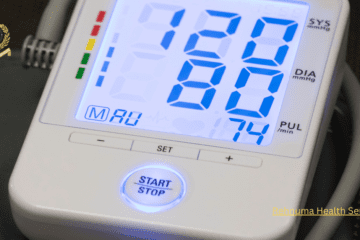In today’s modern digital era, the benefits of telehealth services are becoming increasingly evident as healthcare evolves beyond traditional settings. With just a few clicks, patients can consult doctors, access diagnostics, manage chronic conditions, and receive medical advice, all without leaving the comfort of their homes. Telehealth, also known as telemedicine or virtual care, is not only bridging the gap between patients and healthcare providers but also enhancing access, efficiency, and overall care quality.
Let’s dive into the wide-ranging advantages of this transformative healthcare model.
What Are Telehealth Services?
Telehealth services use digital information and communication technologies like computers, tablets, and smartphones to access healthcare services remotely. These platforms enable real-time doctor consultations, remote patient monitoring, electronic health records (EHRs), and mobile health applications.
From urban professionals to rural families, virtual healthcare solutions are becoming a lifeline, offering timely, personalized, and cost-effective care.
Benefits of Telehealth Services for Patients
There are many benefits of Telehealth Services for Patients. Let’s explore it together.
1. Convenience at Your Fingertips
Say goodbye to long commutes and waiting room delays! One of the key advantages of telemedicine is its convenience. Patients can attend virtual appointments from home, office, or even while traveling.
🚀 “Healthcare that comes to you because your time matters.”
2. Improved Access to Specialists
Living in a remote area? No problem. Telehealth breaks geographical barriers, offering access to specialists who may not be available locally. From dermatology to psychiatry, expert opinions are just a video call away.
3. Faster Diagnosis and Treatment
With instant sharing of symptoms, images, and test results, telehealth speeds up diagnosis and treatment, especially for minor ailments. Early intervention often leads to better health outcomes.
Benefits of Telehealth for Healthcare Providers
1. Greater Patient Reach
Clinics and hospitals can serve more patients by expanding their reach through virtual platforms. This is especially valuable in under-resourced or rural communities.
2. Improved Patient Monitoring
Chronic condition management becomes more efficient with telemonitoring tools. Devices like glucose meters and blood pressure monitors can transmit real-time data to healthcare providers, ensuring timely adjustments to care plans.
3. Streamlined Workflow
Telemedicine systems reduce paperwork, enhance scheduling, and improve overall productivity. Integrated electronic health records make it easier to track patient history and manage appointments.
Economic and System-Wide Benefits of Telehealth Services
1. Reduced Healthcare Costs
One of the major telehealth benefits is cost reduction. Both patients and providers save on travel, facility charges, and administrative expenses. Insurance providers are increasingly recognizing the value of reimbursing telehealth services.
2. Decreased Hospital Readmissions
Remote monitoring and virtual follow-ups significantly lower the risk of post-treatment complications and unnecessary hospital readmissions, particularly among patients with chronic diseases.
💡 “Prevention is not just better than cure; it’s cheaper too!”
3. Supports Overwhelmed Health Systems
During public health emergencies like COVID-19, telehealth has played a crucial role in maintaining continuity of care. Offering remote consultations helped reduce patient loads in overcrowded emergency departments and clinics, allowing healthcare facilities to focus on critical cases.
Telehealth in Mental Health and Counseling
1. Anonymity and Comfort for Mental Wellness
Many individuals feel more comfortable discussing mental health issues in a private, familiar environment. Teletherapy offers a stigma-free, accessible alternative for those dealing with anxiety, depression, and stress.
2. Flexible Scheduling
Virtual counseling eliminates transportation challenges and offers after-hours appointments, making mental health support more adaptable to modern lifestyles.
Enhancing Rural and Underserved Healthcare Access
1. Bridging the Urban-Rural Divide
In many rural or underserved communities, access to qualified healthcare professionals is limited. Remote health services deliver essential medical consultations, prenatal care, and chronic disease management without the need for travel.
2. Mobile Clinics and Community Health Integration
The integration of mobile clinics with telemedicine significantly enhances healthcare accessibility, especially during health drives and outreach programs. This powerful combination brings quality care directly to underserved communities, bridging gaps in both distance and resources.
Benefits of Telehealth for Chronic Disease Management
1. Regular Virtual Checkups
For patients managing diabetes, hypertension, or asthma, remote healthcare enables frequent monitoring, timely advice, and medication adjustments, all from home.
2. Reduced ER Visits
Telehealth, particularly through remote monitoring and virtual consultations, plays a key role in reducing unnecessary emergency room visits. By enabling early detection of potential health issues such as abnormal vital signs, sudden changes in symptoms, or medication side effects, telemonitoring allows healthcare providers to intervene before conditions escalate. This proactive approach not only helps manage chronic illnesses more effectively but also minimizes the chances of emergencies. As a result, patients experience less anxiety, caregivers feel more supported, and hospitals benefit from decreased congestion in already overburdened ER departments. It’s a win-win solution that promotes timely care while conserving critical medical resources.
Technological Advancements Driving Telehealth
1. AI-Powered Diagnostics
Artificial intelligence is being used to assist in diagnostics, predict patient deterioration, and offer clinical decision support, enhancing the scope of virtual consultations.
2. Wearables and IoT Devices
Smartwatches and wearable sensors enable round-the-clock health monitoring, giving doctors a continuous stream of data for better treatment planning.
Challenges and Considerations
While the benefits of virtual healthcare are impressive, challenges remain:
- Digital Literacy: Not everyone is tech-savvy.
- Connectivity Issues: Reliable internet access is essential.
- Privacy Concerns: Ensuring HIPAA-compliant, secure platforms is vital.
- Regulatory Barriers: Licensing and insurance policies can vary across regions.
Future of Telehealth Services
The future is bright for digital health services. With ongoing technological innovation, policy improvements, and greater patient acceptance, virtual care is poised to become a standard in healthcare delivery.
“Virtual today, vital tomorrow, telehealth is here to stay.”
Conclusion: Why Embrace the Benefits of Telehealth Services?
The benefits of telehealth services go beyond convenience. They are about creating a healthcare system that is inclusive, affordable, responsive, and patient-centered. Whether you’re a busy professional, a caregiver, or someone managing a long-term condition, virtual care is an empowering solution tailored for modern lifestyles.
As digital healthcare continues to expand, embracing telehealth is no longer optional; it’s essential for better health outcomes in an increasingly connected world.




